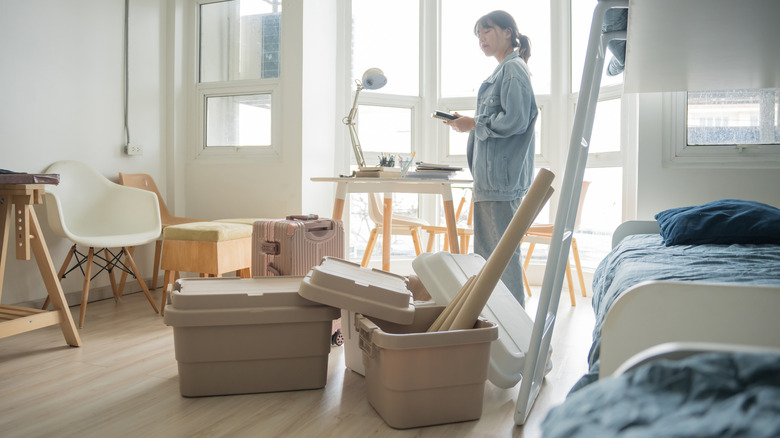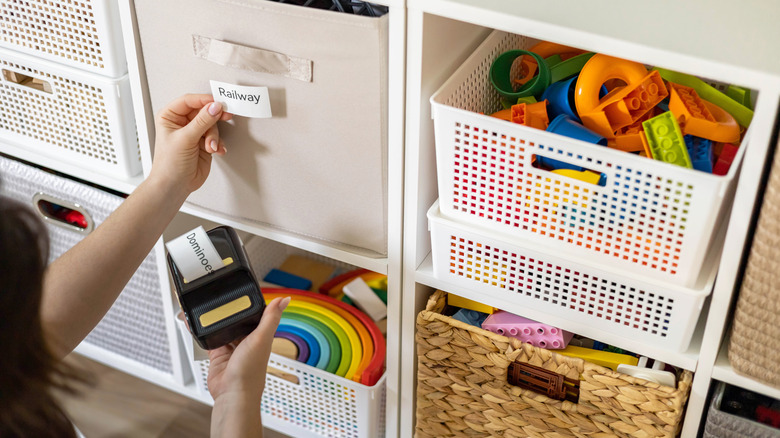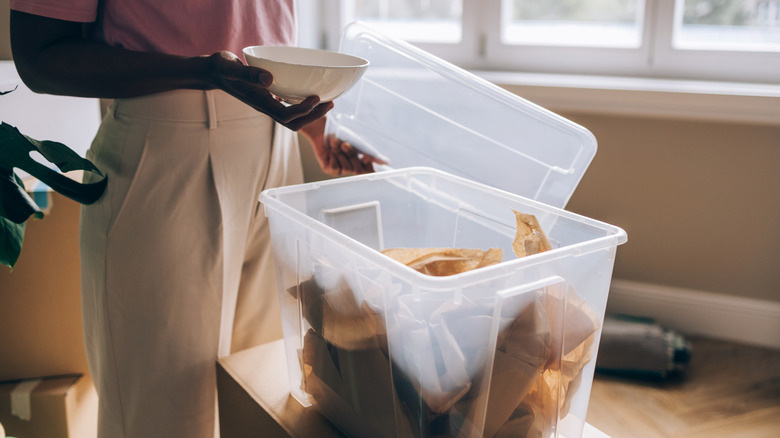The Popular Organizing Technique You're Probably Doing Wrong (& What To Do Instead)
Home organization is a key factor in keeping a happy and clean household. Organizing rooms, shelving, and cabinets may be a fun task for some homeowners, but others might find it daunting and consider it a stressful chore to take on. Homeowners who find joy in tidying and sorting usually have their techniques down pat, using hacks and strategies that work best for decluttering their homes to maintain their clutter-free living space. Some of these strategies could involve setting aside spaces and containers for certain things. While making a place for everything and putting everything in said space is a go-to technique for cleaning and organizing homes, there are some downsides to creating a rigorous sorting and labeling system for your belongings.
Among the common mistakes everyone makes when organizing their home is getting a little too meticulous when it comes to assigning and labeling certain spaces for certain things. Deemed as performative organizing, sticking a label on something that is clearly visible ultimately creates more of a hassle than an organizing technique. While labeling correctly helps keep things organized and easy to find, homeowners can often fall into the trap of abusing the labeling technique. Although there are many ways to use a label maker around your house effectively, labeling anything and everything can bring more disarray than tidiness when done incorrectly. Fortunately, there are many other ways to stay organized without misusing labels.
Where labeling goes wrong
Labeling to organize items and spaces is a tried and true technique utilized by professional home organizers. When used correctly, accurately labeling storage containers and areas can be an effective way to tidy and declutter. When used incorrectly, however, creating labels for everything can ultimately make labeling for organizational purposes counterproductive. Being super specific with labels can limit the number of items you can place inside a drawer or storage container that's "officially" set aside for the item listed on the label. Likewise, being too broad with your label categories can cause more chaos and mess within a space, making it even more difficult to locate an item.
Also, adding a label to a storage space can make homeowners feel like they must place items that meet the label's criteria into that assigned space. The pressure of needing to place things where they are "officially" designated can become a hindrance to organization, making it feel like more of a burden than a benefit. Once the task is deemed as a burden, it's not long before the label is disregarded, opening the door for clutter to return and completely defeating the purpose of labeling to begin with.
More efficient labeling practices
If you find yourself falling to the wrong side of labeling, worry not! There are plenty of methods for keeping your home neat and organized, with or without labels. For one, you can make a habit of decluttering spaces and bins frequently, making sure there aren't any extra objects lying around on surfaces or in cabinetry. Ensuring your household only keeps necessary items can prevent clutter from accumulating in areas, which can reduce the need for labeling. This shift from the pressure of labelling could even allow for flexibility and change in organizing techniques in your home.
However, if you still find yourself reaching for the label maker, there are ways to restrategize. If it's still needed, making your label categories fall perfectly in between broad and specific can be beneficial to the organization, allowing enough room for general items to have a home while not being too specific that items are left astray. For example, instead of having a storage box for "Dawn dish soap" and another for "Ajax dish soap" under your kitchen sink, how about a container labeled "dish soap" that'll accommodate both brands?
If you want to ditch your label maker altogether, you can place items in clear storage boxes or containers. A clear view of what resides within the container makes it easier to find and organize items accordingly, completely eliminating the need for labels.


